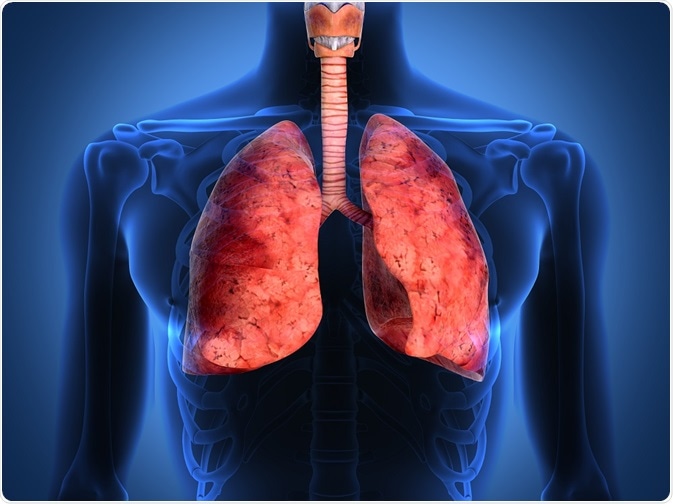Asthma History

Asthma is a chronic disorder characterized by recurrent episodes of airway obstruction and wheezing due to inflammation of the airways.
 Credit: u3d/Shutterstock.com
Credit: u3d/Shutterstock.com
Asthma History: early civilization
Asthma has a long history of evolution before it was categorically defined. The earliest mention of respiratory distress and wheezing (the occurrence of a whistling sound while breathing) has been found in 2600 BC in China.
Herbal fumes and extracts have been used for many centuries to alleviate the symptoms, though the underlying mechanisms and pathways were not known. The contemporary “Georg Ebers papyrus” found in Egypt indicated more than 700 remedies for airway discomfort.
Later, in 1792 BC, the “Code of Hammurabi” was created. It documented the symptoms of breathlessness in a group of individuals in Babylon.
While contributing to a range of explanations put forward to describe the condition, Hippocrates coined the term “Asthma”. This Greek term means respiratory distress and panting. Hippocrates correlated the occurrence of asthma with environmental triggers.
In 327 BC, during the era when Alexander the Great was extending his invasions to India, the smoke of stramonium (a herb with anticholinergic effects) was used for relaxing the lungs. During the Roman era, physicians correlated symptoms such as the inability to breathe without making noise and gasping with asthma. They also described the worsening of these symptoms with physical activity.
Asthma history: AD
In 50 AD, Pliny the Elder reported that pollen was one source of breathing difficulty. The extract of ephedra was recommended, along with wine, to ease the discomfort.
In 100 AD, a Greek physician, Aretaeus of Cappadocia, listed the symptoms of asthma, including cough, difficulty in breathing, tiredness, and heaviness in the chest. He also mentioned that the frequency of coughing increased as the condition worsened, and vice versa; and he observed that even though asthma might not be fatal, the patients lived under its constant shadow.
He prescribed owl’s blood along with wine, among other remedies to treat asthma. In 129 AD, a Roman Physician, Claudius Galen, based on his thorough research into human anatomy, suggested that the respiratory rate could be controlled manually as breathing was a function of muscular contraction.
During 200-500 AD, the Jewish Talmud advocated the use of “hiltith”, a resin found in vegetables of the carrot family, for treatment of asthma symptoms. Another Jewish scholar, Maimonides advised intake of fluid and chicken soup, good personal hygiene, and sleep based on his observations around 1200 AD.
Asthma history: the medieval era
in the Middle Ages, the knowledge of asthma and its treatments started to move forward bit by bit. Europeans started using tobacco as an expectorant to aid the removal of mucus around 1500 AD.
A Belgian researcher, Jean Baptiste Van Helmont in around 1700 AD, mentioned that asthma began in “the pipes of the lungs”. Bernardino Ramazzini was the first to discover a relationship between asthma and dust, and identified “exercise-induced asthma”.
The Aztecs used ephedra for mucus clearance in Central America. In South America, the Incas employed a cocaine-like dried leaf to treat asthma. Arsenic was recommended by a few physicians for the treatment of respiratory distress around 1800 AD.
Asthma history: modern day
A Canadian scientist, Sir William Osler, who is known as the “Father of modern medicine”, reported in his epoch-making book “The Principles and Practice of Medicine”, that asthma was a swelling of the bronchial membranes accompanied by spasm of the bronchial tubes, closely related to hay fever, often pediatric, and familial in nature.
He recognized nervous stimulation as a cause of asthma attack. His research led to the idea that asthma was a psychosomatic disease. His choice of treatment approaches reflected his understanding of the nervous system triggers of asthma.
The 1900s
In the early 1900s asthma began to be treated with selective β2-adrenoceptor agonists. Belladonna alkaloids from plant source began to be utilized from 1905. Allergy immunotherapy was also introduced during the same period for treating this ailment.
Francis Rackemann discovered that asthma could result from reasons other than allergy as well, and characterized allergic and non-allergic triggers of asthma in 1916. Küstner and Prausnitz identified IgE and its correlation with allergic reactions in asthmatics in 1921.
Physicians started to prescribe aminophylline suppositories and tablets, and adrenaline injections for asthma in the 1940s and 1950s. Inhalation anti-cholinergics were used as rescue medications, while oral combinations became popular for long-term treatment in the 1960s.
The invention of peak flow meters during the 1960s and 1970s was a technological leap aiding effective treatment. In the 1970s, extensive clinical research led to the use of inhaled corticosteroids for effective management of asthma.
As the understanding of allergen exposure and the resultant release of chemical mediators which cause airway constriction and remodeling became clearer, around 1980, targeted treatment options were established, including the antileukotrienes, cromones, and anti-IgE therapies.
After centuries of work, more promising options are being developed for asthma management with continued enhancement in the knowledge of cellular biochemistry.
Sources:
- https://asthma.net/living/history-of-asthma-part-one-in-the-beginning/
- https://asthma.net/living/history-of-asthma-part-2-modern-history/
- https://www.ncbi.nlm.nih.gov/pmc/articles/PMC2892047/
- https://www.atsjournals.org/doi/full/10.1164/rccm.200502-257OE
- http://www.allergyandasthma.com/home/articles/history-of-asthma
Further Reading
- All Asthma Content
- Asthma
- Childhood Asthma
- Signs of Asthma Attack
- Asthma Symptoms
Last Updated: Feb 26, 2019
Source: Read Full Article